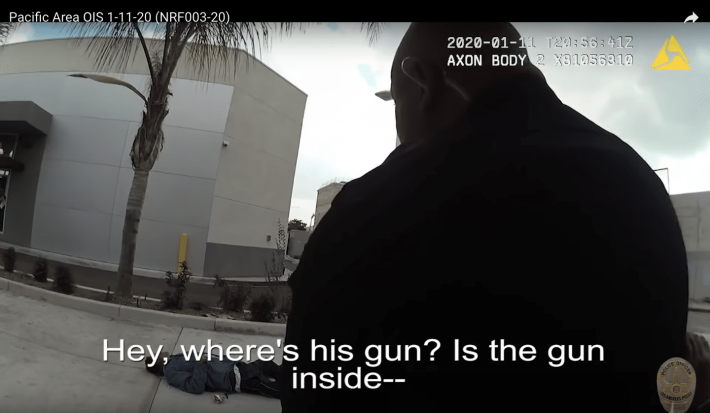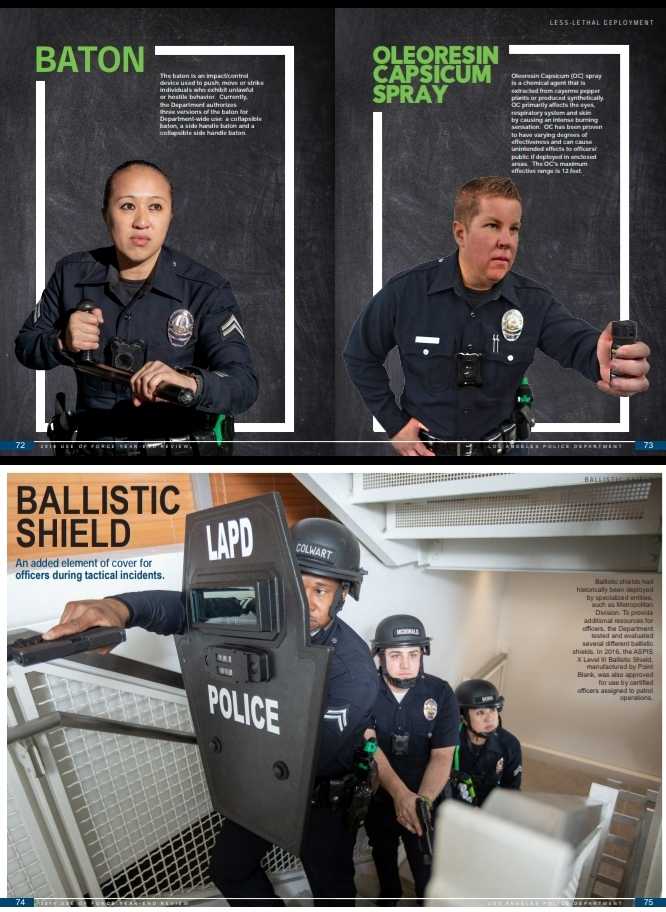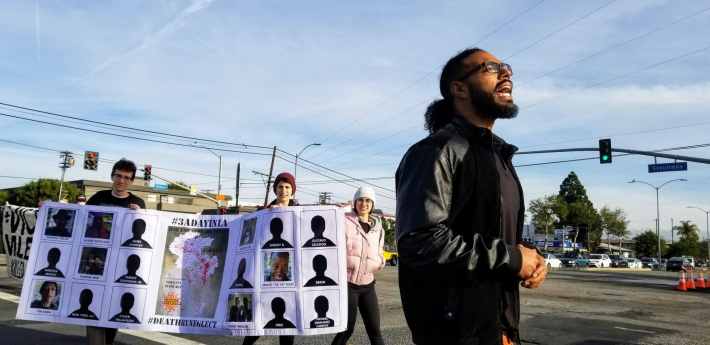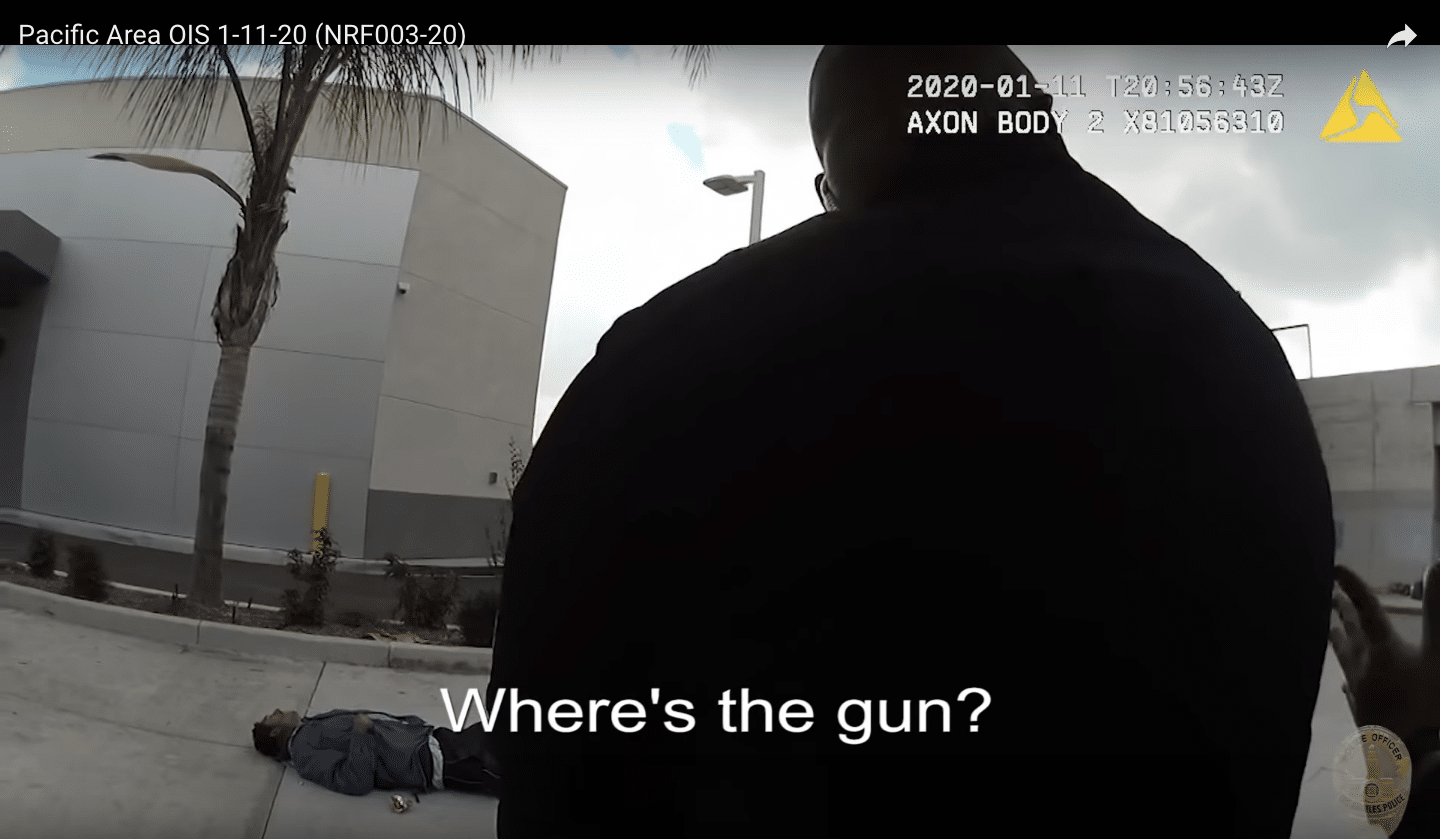Update: On November 24, the Los Angeles Police Commission–the civilian oversight board of the LAPD–unanimously ruled that the fatal shooting of Victor Valencia was "in policy."
[dropcap size=big]W[/dropcap]hen Sergeant I Colin Langsdale responded to a 911 call near Culver City, they thought Victor Valencia was a black man with a gun. “Suspect is a male black, armed with a small black handgun in his left hand. He was last seen walking towards Overland,” an LAPD dispatcher said over the radio a little earlier.
“Okay watch your crossfire, watch your crossfire, don’t want it to go into the Shell station,” someone over the radio reminded all units to be mindful of innocent bystanders as they closed in on a busy Shell gas station on the corner of Venice and Sepulveda Blvd at around 12:45 PM. Seconds later, “Shots fired! Shots fired...one suspect is down.”
Later, the LAPD admitted, what was thought was a pistol was actually just a bicycle part and Valencia was Latino—not black. After the shooting Valencia was transported to a hospital where he was pronounced dead at 31 years old.
On Monday, 16 days after Valencia was gunned down, LAPD released a 40-minute critical incident video on their YouTube channel. The video is notably longer than most critical incident videos. The last three that the department released are less than 40 minutes combined. In the most recent video, public information officer, Josh Rubenstein, acknowledged that the video was being released early due to “significant community concern,” regarding the incident.
In the video, The LAPD presents three 911 calls. In the first two, the callers both misidentify Valencia as a black man, they also admit they’re unsure if he was holding a gun.
The third caller also misidentifies Valencia as being a black man, “He looked like he was a black guy or a Mexican, he was darker, he was Hispanic I think...he was darker.”
Before taking Valencia into custody, LAPD officers are seen steps away from Valencia struggling to formulate a plan to handcuff him as Valencia appears lifeless.
Later, surveillance footage shows Valencia walking west on Venice Boulevard. He walks a couple of steps out of the bottom left corner of the frame. A couple of people wait for food at a taco truck in the background as two other people walk into the top of the frame before quickly scurrying backward. Moments later, the two people waiting for food run east along Venice Blvd away from Valencia. Valencia comes back into the bottom left corner of the frame as he falls to the ground on his back with the bicycle part in his left hand. He lifts his head off the ground momentarily while his hands appear to shake before his head hits the ground again.
The video doesn’t show the actual shooting from the perspective of the body-worn video from Sergeant I Langsdale, the officer that was involved in the shooting didn’t have his body-worn camera turned on initially according to Capitan Gisselle Espinoza. The video also doesn’t show any footage from patrol car cameras. Instead, body-worn video picks up after the shooting.

Body-worn video shows Valencia remained on the sidewalk for over seven minutes before he was taken into custody. Before taking Valencia into custody, LAPD officers are seen steps away from Valencia struggling to formulate a plan to handcuff him as Valencia appears lifeless. For over three minutes, over half a dozen LAPD officers struggle to find a ballistic “shield”, one of those handheld barriers you see law enforcement use sometimes during protests.
When an officer carrying a shield finally arrived, the officer that requested it asked them, “You remember how to do this?” before giving the officer instructions on approaching Valencia, “Alright get your gun out, you’re going to approach,” the instructing officer said.

Later six LAPD officers approached Valencia slowly with the shield leading the way and several weapons drawn. The officers get within inches of Valencia whos remained on his back the entire time but then take more time to formulate another plan to handcuff him.
Standing over Valencia, they begin to inch forward with their weapons drawn but retreat again to reformulate their strategy, “His hand is under, we can’t tell if it’s a gun in it or not,” one of the officers says.
Even more LAPD officers surround Valencia before they finally handcuff him.
Fuck them 😭 took them forever to get him they let him die sounded like a fucking training video to me uhhhhh
— Ms. Lady W (@saracervantes51) January 29, 2020
“Sounded like a fucking training video to me,” Valencia’s cousin, Sara Cervantes reacted to the video on Twitter. “Took them forever to get him, they let him die,” she wrote.
According to Espinoza, an ambulance was called from an airship immediately after Valencia was shot but the body-worn video doesn’t show paramedics arriving until after Valencia was handcuffed.
In the video, the Los Angeles Fire Department arrived at the scene and began CPR on Valencia. “Can we take the handcuffs off,” one of the firefighters asks an LAPD officer. At first, the officer says no but later several other officers confirm that the handcuffs could be removed. In the end, the handcuffs come off. It takes LAFD over 7 minutes to get Valencia into an ambulance.
Cervantes describes Valencia as a funny and loving person. She told L.A. Taco that he was diagnosed with schizophrenia several years ago and had been in facilities before but also stressed that he had been doing well more recently. Valencia leaves behind a two-year-old son according to Cervantes. “He loved life and now that’s gone,” Cervantes concludes.
“Should being poor and sick in Los Angeles be a death sentence?”
Cathy Valencia, Victor’s sister described him as “mentally unstable and medically diagnosed,” on a GoFundMe page to raise funds for his funeral services.
A week after his death, as the sun rose and traffic grew, a small group of community members gathered on the corner near where Valencia lost his life. Pairs of people held banners to honor the nearly thousand unhoused people that lost their lives in 2019 and Valencia, as people in cars made their way to work.
Advocates have claimed that Valencia was unhoused at the time of the shooting but in the eyes of the coroner and LAPD, Valencia wasn’t considered homeless. A source that’s in contact with members of Valencia’s immediate family said that Valencia was on the fringes of homelessness and was missing for weeks leading up to his death.
“Should being poor and sick in Los Angeles be a death sentence?” Adam Smith, an organizer with White People for Black Lives said over a portable loudspeaker. Smith admits that Valencia might have needed intervention but questioned whether the LAPD should be the first responders to these kinds of crises.

This is not the first time the LAPD thought someone had a gun and it turned out to be something else. In 2016, LAPD shot Walter DeLeon in Los Feliz after he pointed a towel wrapped around his hand at a police officer. DeLeon was later found to be unarmed. He survived the shooting but lost part of his brain, one of his eyes and the ability to walk as a result.
And in January of 2018, LAPD responded to a domestic abuse call. Officers approached 31-year-old Dexter White on 40th Place and Walton Avenue. An officer-involved shooting occurred after White produced an object that officers believed was a handgun. It turned out to be a cell phone. White also survived the shooting.
On average, use of force incidents involving the LAPD happens every other week in Los Angeles. In the time that it will take for the LAPD to finish their investigation and present their report to the police commission, which can take over a year, many more shootings will occur.
Across the country, mainly people of color have been shot and oftentimes killed for holding cell phones, pipes, umbrellas, toys, and fireworks that law enforcement mistook for firearms.
The LAPD has already been involved in three use of force incidents this year. Last year they were involved in 36. L.A. Taco found that across the county last year, 39 people lost their lives during use of force incidents (including suicide) according to the L.A. County Medical Examiner.
On average, use of force incidents involving the LAPD happens every other week in Los Angeles. In the time that it will take for the LAPD to finish their investigation and present their report to the police commission, which can take over a year, many more shootings will occur. For the families of people that have been shot or killed by police, based on what history has told us, it’s unlikely that charges will be filed in any of these cases. During District Attorney Jackie Lacey’s tenure, hundreds of people have been killed by law enforcement and Lacey has only brought charges against two officers.







